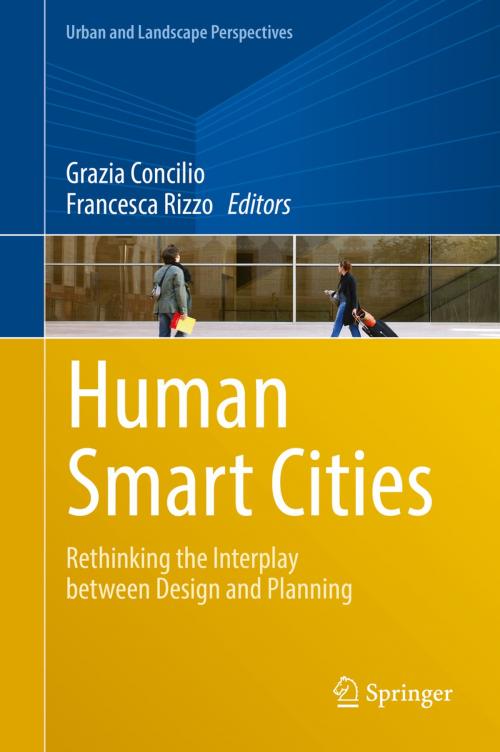Human Smart Cities
Rethinking the Interplay between Design and Planning
Nonfiction, Art & Architecture, Architecture, Planning, Social & Cultural Studies, Political Science, Politics, City Planning & Urban Development, Science & Nature, Nature| Author: | ISBN: | 9783319330242 | |
| Publisher: | Springer International Publishing | Publication: | July 13, 2016 |
| Imprint: | Springer | Language: | English |
| Author: | |
| ISBN: | 9783319330242 |
| Publisher: | Springer International Publishing |
| Publication: | July 13, 2016 |
| Imprint: | Springer |
| Language: | English |
Within the most recent discussion on smart cities and the way this vision is affecting urban changes and dynamics, this book explores the interplay between planning and design both at the level of the design and planning domains’ theories and practices.
Urban transformation is widely recognized as a complex phenomenon, rich in uncertainty. It is the unpredictable consequence of complex interplay between urban forces (both top-down or bottom-up), urban resources (spatial, social, economic and infrastructural as well as political or cognitive) and transformation opportunities (endogenous or exogenous).
The recent attention to Urban Living Lab and Smart City initiatives is disclosing
a promising bridge between the micro-scale environments, with the dynamics of such forces
and resources, and the urban governance mechanisms. This bridge is represented by those urban collaborative environments, where processes of smart service co-design take place through dialogic interaction with and among citizens within a situated and cultural-specific frame.
Within the most recent discussion on smart cities and the way this vision is affecting urban changes and dynamics, this book explores the interplay between planning and design both at the level of the design and planning domains’ theories and practices.
Urban transformation is widely recognized as a complex phenomenon, rich in uncertainty. It is the unpredictable consequence of complex interplay between urban forces (both top-down or bottom-up), urban resources (spatial, social, economic and infrastructural as well as political or cognitive) and transformation opportunities (endogenous or exogenous).
The recent attention to Urban Living Lab and Smart City initiatives is disclosing
a promising bridge between the micro-scale environments, with the dynamics of such forces
and resources, and the urban governance mechanisms. This bridge is represented by those urban collaborative environments, where processes of smart service co-design take place through dialogic interaction with and among citizens within a situated and cultural-specific frame.















